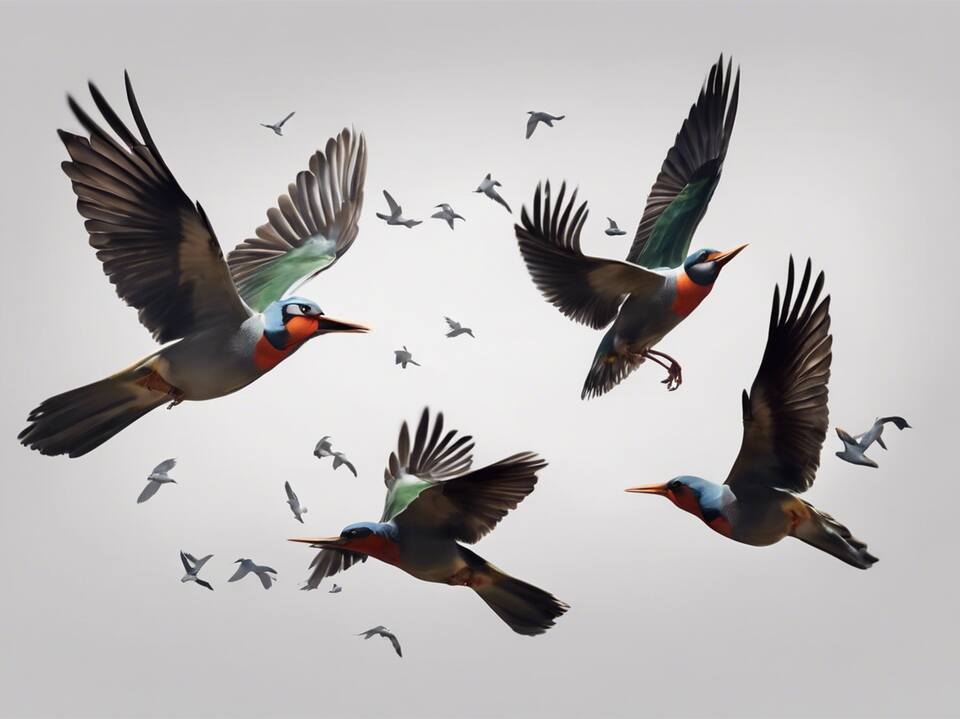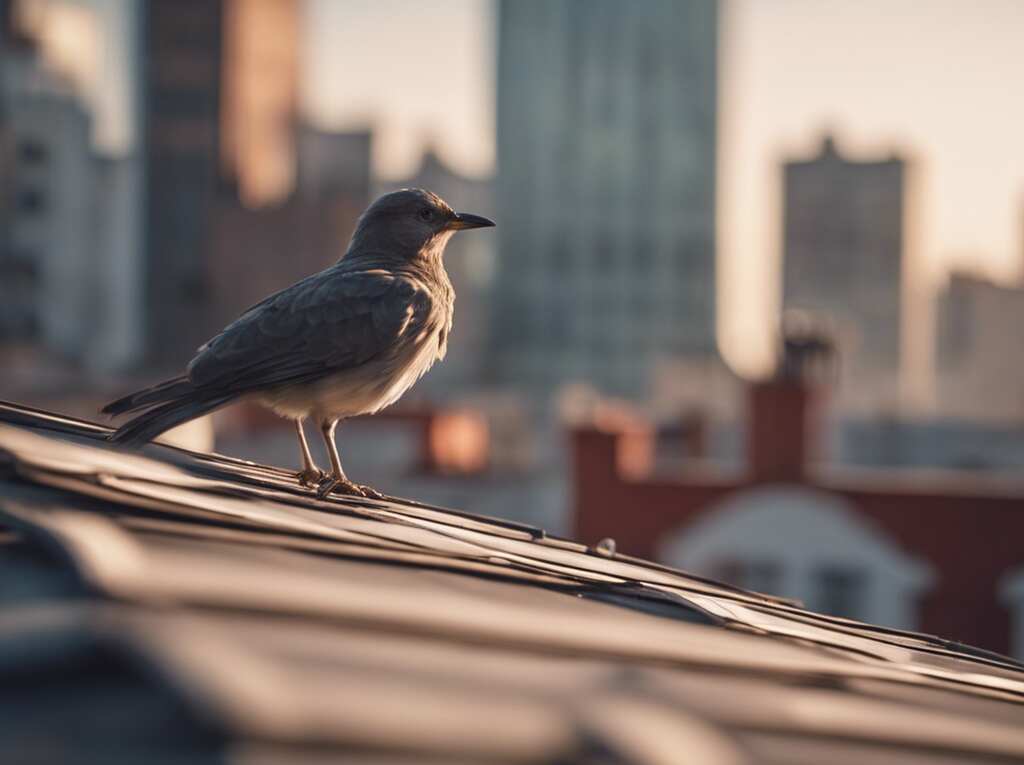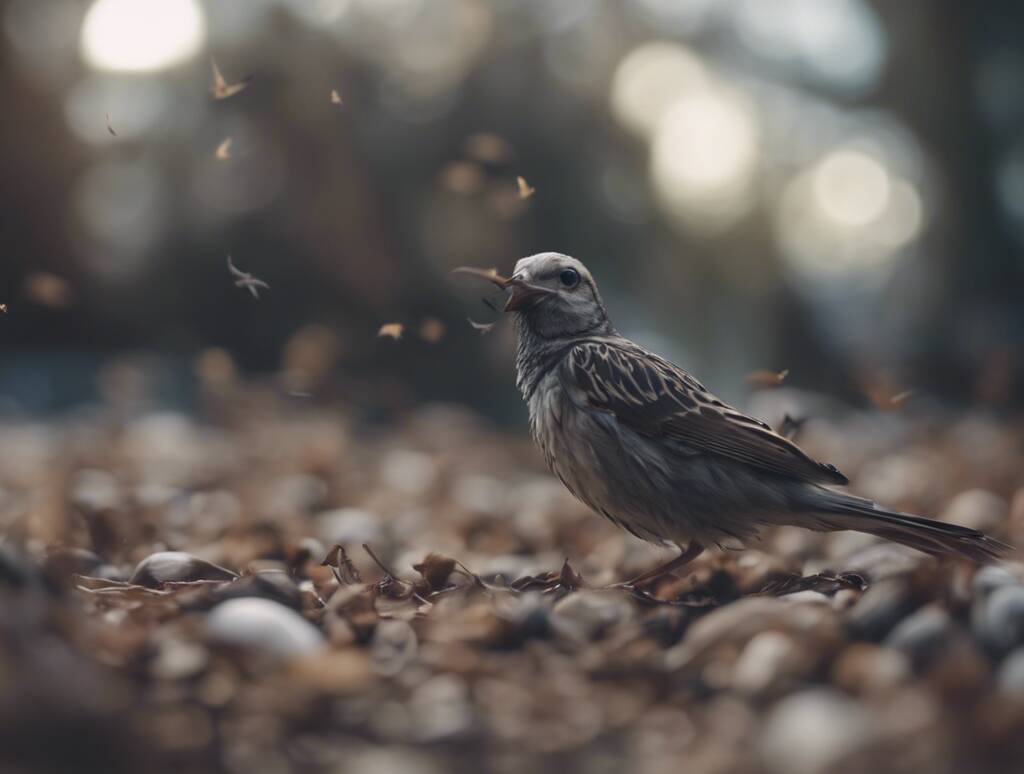The life cycle of birds is a wondrous and intricate phenomenon that intrigues many. However, among the various aspects related to birds, one question that often arises is, “Where do birds go to die?” This inquiry may seem morbid, but it sheds light on the natural processes that govern these creatures’ existence.
Table of Contents
- 0.1 Understanding Mortality in Birds through Natural Processes
- 0.2 Disappearance of Bird Carcasses in the Wild
- 0.3 Predation and Natural Recycling
- 0.4 Human Interaction with Bird Mortality
- 0.5 The Significance of Bird Mortality in Ecological Balance
- 1 The Role of Predators in the Ecosystem
- 2 Natural Decomposition Processes in Wildlife
- 3 Impact of Avian Mortality on Biodiversity
- 4 Symbolism of Birds in Various Cultures
- 5 Conclusion
- 6 Author
Understanding Mortality in Birds through Natural Processes
Birds, like all living organisms, have a lifespan that eventually comes to an end. When a bird nears the end of its life, instinct often drives it to seek out a secluded and safe spot away from predators. This behavior is an innate survival mechanism designed to protect the bird in its most vulnerable state.
Disappearance of Bird Carcasses in the Wild
Unlike many mammals, birds do not leave behind easily noticeable remains after death. Their lightweight and hollow bones decompose rapidly, and scavengers quickly consume the carcass. This efficient decomposition process ensures that little trace of the bird is left in the environment.
Predation and Natural Recycling
Scavengers play a crucial role in the ecosystem by recycling nutrients from deceased animals back into the environment. Animals such as vultures, crows, and insects feed on bird carcasses, breaking them down and contributing to the cycle of life. This natural process of decomposition and recycling ensures that no organism goes to waste in nature.
Human Interaction with Bird Mortality
In urban environments, the narrative of bird mortality takes a slightly different turn. Birds may succumb to various hazards such as collisions with buildings, pollution, or predation by domestic pets. In such cases, human intervention may be required to ensure proper disposal of the deceased bird’s remains to prevent the spread of disease or contamination.
The Significance of Bird Mortality in Ecological Balance
While the question of where birds go to die may evoke curiosity, it also highlights the interconnectedness of all living beings in the ecosystem. The natural processes that govern bird mortality contribute to maintaining ecological balance and sustainability. Understanding and respecting these processes are essential for preserving biodiversity and the health of our planet.
The inquiry into where birds go to die unravels a deeper understanding of the intricate web of life in which these avian creatures are entwined. By recognizing the natural processes of decomposition, predation, and recycling, we gain insight into the profound cycle of life and death that sustains the delicate balance of nature. Next time you gaze upon a flock of birds soaring overhead, remember that their journey does not merely end in the skies but continues to contribute to the vibrant tapestry of life on Earth.
The Role of Predators in the Ecosystem
Predators play a crucial role in maintaining the balance of ecosystems around the world. From the majestic lions of the African savannah to the tiny but efficient spiders in our gardens, predators help regulate the populations of other species, preventing overpopulation and ensuring biodiversity. Understanding the role of predators in the ecosystem is essential for conservation efforts and the overall health of our planet.
The Importance of Predators in Ecosystems
Predators are essential for keeping prey populations in check. By preying on certain species, they help prevent these populations from exploding, which can have detrimental effects on the entire ecosystem. For example, without predators, herbivores could overgraze vegetation, leading to habitat degradation and loss of plant species. This, in turn, affects other animals dependent on those plants for food and shelter.
Predators as Keystone Species
Some predators are considered keystone species, meaning they have a disproportionately large impact on their ecosystem relative to their abundance. For instance, sea otters play a crucial role in maintaining kelp forests by preying on sea urchins. Without sea otters, sea urchin populations would surge, consuming vast amounts of kelp and disrupting the entire marine ecosystem. Therefore, the presence of predators like sea otters is vital for the health and stability of kelp forest ecosystems.
Predator-Prey Relationships
Predator-prey relationships are intricate and have co-evolved over time. Prey species develop various adaptations to avoid predators, such as camouflage, speed, or chemical defenses. In response, predators also evolve strategies to outsmart their prey, leading to a continuous evolutionary arms race. These relationships are dynamic and shape the behaviors, morphology, and distribution of species within an ecosystem.
Conservation Implications
The decline of predator populations can have cascading effects on ecosystems. Human activities such as habitat destruction, overhunting, and pollution have contributed to the decline of many predator species worldwide. Conservation efforts aimed at protecting predators are crucial not only for their survival but also for maintaining the delicate balance of ecosystems. Restoring predator populations can have far-reaching benefits for biodiversity and ecosystem stability.
Human Perspectives on Predators
Humans have had complex relationships with predators throughout history. While some predators pose threats to human activities such as agriculture or livestock rearing, others are revered for their beauty and symbolic value. Conservation initiatives often involve finding ways for humans and predators to coexist peacefully, such as through the implementation of non-lethal predator control methods and habitat protection.
Predators are an integral part of ecosystems, playing diverse roles that help maintain ecological balance. Understanding and appreciating the significance of predators is essential for conserving biodiversity and promoting sustainable coexistence within our natural world.

Natural Decomposition Processes in Wildlife
The natural world is a finely balanced ecosystem where every living being, no matter how big or small, plays a crucial role. When it comes to the delicate cycle of life and death, even the question of where birds go to die is significant. Birds, like all living creatures, are subject to the inevitable process of death, and understanding how their remains decompose in the wild sheds light on the intricate workings of nature.
The life of a bird is a dynamic and active one. They soar through the skies, sing melodious tunes, and build intricate nests. However, just like any other living organism, birds eventually reach the end of their lifespan. When a bird dies in the wild, various natural decomposition processes come into play.
Decomposition Process
When a bird dies, whether from old age, illness, or predation, the process of decomposition begins. Unlike human bodies that are buried or cremated, wild birds typically do not receive a formal farewell. Instead, they become part of the ecosystem in which they lived.
Bird carcasses on the ground are quickly discovered and recycled by nature’s cleanup crew. Scavengers such as vultures, crows, and foxes play a vital role in this process. They feast on the remains, breaking down the bird’s body and preventing it from going to waste.
Return to the Earth
As scavengers consume the bird’s flesh, insects and bacteria also join in the decomposition process. Maggots, beetles, and bacteria work together to break down proteins, fats, and other organic materials. Through this natural decay process, the bird’s body gradually returns to the earth in the form of essential nutrients.
The nutrients released during decomposition enrich the soil, benefiting plants and other wildlife in the area. Thus, the death of a bird not only sustains other animals but also contributes to the overall health of the ecosystem. It’s a poignant reminder of the interconnectedness of all living beings in nature.
Conservation Impact
Understanding the natural decomposition processes in wildlife, including birds, is crucial for conservation efforts. By observing how wildlife carcasses are recycled in the wild, researchers gain valuable insights into nutrient cycling, ecosystem dynamics, and the web of life.
Conservationists can use this knowledge to assess the health of ecosystems, monitor populations, and make informed decisions about habitat management. In a world where human activities exert increasing pressure on natural habitats, preserving these intricate processes becomes ever more vital.
The question of where birds go to die unravels a fascinating tale of natural decomposition processes in the wild. From scavengers to insects and bacteria, every player in this ecological drama has a part to play. By honoring the cycle of life and death in the natural world, we deepen our appreciation for the beauty and complexity of wildlife ecosystems. Let us continue to marvel at the wonders of nature and work towards a future where all creatures, even in death, contribute to the tapestry of life.
Impact of Avian Mortality on Biodiversity
Understanding Avian Mortality and Its Impacts on Biodiversity
Birds, with their vibrant plumage and melodious songs, have long captured the fascination of humans. However, the circle of life applies to them as it does to all living creatures. One common question that arises is, “Where do birds go to die?” The answer to this query has significant implications not only for our understanding of avian biology but also for biodiversity conservation efforts.
Avian Mortality and Ecosystem Dynamics
Birds play a crucial role in maintaining the delicate balance of ecosystems. They contribute to seed dispersal, pollination, insect control, and nutrient cycling. When birds succumb to mortality, whether due to predation, disease, accidents, or old age, it can have ripple effects throughout the environment. Understanding where birds go to die can provide valuable insights into these processes.
Deciphering the Mystery
Unlike some animals that seek secluded places to pass away, birds do not have specific “cemeteries” where they go to die. Instead, their fate is scattered across the landscape. Some birds may die in their nests, while others may perish in flight or on the ground. Predators, scavengers, and environmental factors like weather and disease can influence where and how a bird meets its end.
Implications for Biodiversity Conservation
The mortality of birds, especially those belonging to threatened or endangered species, can have far-reaching consequences for biodiversity conservation. Loss of individuals from a population can reduce genetic diversity, hamper reproductive success, and weaken the overall resilience of the species. By studying avian mortality patterns, conservationists can better target their efforts to protect vulnerable bird populations.
Avian Mortality Hotspots
Certain areas may act as avian mortality hotspots due to specific threats present in those locations. Collisions with man-made structures like buildings, communication towers, wind turbines, and power lines are major causes of bird mortality. Light pollution in urban areas can disorient birds and lead to fatal encounters. By identifying these hotspots, conservationists can implement measures to mitigate the risks and safeguard avian populations.
The Role of Citizen Science
Citizen science initiatives have proven invaluable in monitoring avian mortality patterns. By enlisting the help of bird enthusiasts and concerned individuals, researchers can gather data on bird mortality events across regions and species. This grassroots approach not only enhances our understanding of where birds go to die but also fosters public engagement in conservation efforts.
The question of where birds go to die may remain enigmatic in its specifics, but the broader implications of avian mortality on biodiversity are clear. By delving into this topic, we gain a deeper appreciation for the interconnectedness of all life forms. As we strive to protect and preserve bird species, we ultimately safeguard the rich tapestry of life that sustains our planet.

Symbolism of Birds in Various Cultures
Humans have long been fascinated by the symbolism of birds in various cultures around the world. These magnificent creatures often hold a special place in mythology, religion, and folklore. Let’s delve into the rich tapestry of meanings that birds embody across different societies.
Birds in Ancient Egypt:
Ancient Egyptians revered birds as symbols of divinity. The ibis, for example, was associated with Thoth, the god of wisdom and writing. The falcon was linked to the sky god, Horus, symbolizing protection and victory. Birds were believed to carry messages between the earthly realm and the heavens, acting as intermediaries between humans and gods.
Birds in Native American Culture:
For many Native American tribes, birds are seen as spiritual messengers. The eagle, with its majestic presence and keen eyesight, symbolizes strength, courage, and wisdom. The owl is often associated with foresight and intuition. Feathers from different birds hold distinct meanings and are used in ceremonies to connect with the spirit world.
Birds in Chinese Symbolism:
In Chinese culture, the crane symbolizes longevity, happiness, and good fortune. It is believed to bring harmony and peace. The phoenix represents rebirth and immortality, rising from its ashes in a cyclical nature. Cranes and phoenixes are often depicted in art and literature as symbols of grace and renewal.
Birds in Greek Mythology:
In Greek mythology, birds are often depicted as messengers of the gods. The owl, associated with Athena, goddess of wisdom, embodies intelligence and protection. The crow is linked to Apollo, the god of prophecy, symbolizing knowledge and foresight. These avian symbols were used to interpret signs and omens from the divine realm.
Birds in Norse Folklore:
Norse mythology also features birds as important symbols. The raven, associated with Odin, the All-Father, is a symbol of wisdom, magic, and knowledge. The eagle is linked to the god of thunder, Thor, representing strength and protection. Birds were believed to guide souls to the afterlife and carry messages between the living and the dead.
Across different cultures and times, birds have captivated human imagination, representing a myriad of qualities and meanings. Whether as messengers of the divine, symbols of protection, or harbingers of wisdom, birds continue to hold a significant place in our collective consciousness. Their presence in mythology and folklore serves to remind us of the intricate connection between the natural world and the spiritual realm.
Summary:
The symbolism of birds reflects the deep-rooted beliefs and values of diverse cultures worldwide. By exploring the roles that birds play in mythology and folklore, we gain a deeper understanding of the universal themes they embody. From ancient Egypt to Norse folklore, birds transcend cultural boundaries, symbolizing concepts that resonate across time and space.
Conclusion
In exploring the mysteries surrounding where birds go to die, we have delved into the intricate balance of nature. The role of predators in the ecosystem is crucial, as they help regulate bird populations and prevent the spread of disease. Natural decomposition processes in wildlife ensure that the remains of birds are broken down, returning essential nutrients to the ecosystem. However, avian mortality also has implications for biodiversity, underscoring the fragility of our interconnected web of life.
Beyond their ecological significance, birds hold a special place in human culture and spirituality. Across different civilizations and belief systems, these winged creatures are often imbued with symbolic meanings. From representing freedom and transcendence to carrying messages from the divine, birds have captured the human imagination for centuries. Their presence in myths, folklore, and religious texts speaks to the enduring fascination and reverence we hold for these feathered beings.
In Native American traditions, birds are viewed as messengers between the earthly realm and the spirit world. The sight of a particular bird species is believed to convey specific messages or warnings from the ancestors. Similarly, in ancient Egyptian mythology, birds such as the ibis and the falcon were associated with deities and played significant roles in religious ceremonies. These cultural associations highlight the deep connection between humans and birds throughout history.
In modern times, birds continue to inspire artists, poets, and environmentalists alike. Their graceful flight, vibrant plumage, and melodious songs enchant people of all ages. Conservation efforts aimed at protecting bird species and their habitats reflect our collective desire to preserve the beauty and diversity of the natural world. By understanding the complex interplay between birds, predators, and the environment, we can work towards ensuring a sustainable future for all living creatures.
As we ponder the question of where birds go to die, we are reminded of our own mortality and the cyclical nature of life. Just as birds play their part in the grand tapestry of existence, so too do we each have a role to play in safeguarding the planet and its inhabitants. By contemplating the mysteries of avian mortality, we gain a deeper appreciation for the intricate interconnectedness of all living beings. May we continue to marvel at the beauty of birds in flight, knowing that they are an integral part of the rich tapestry of life on Earth.



